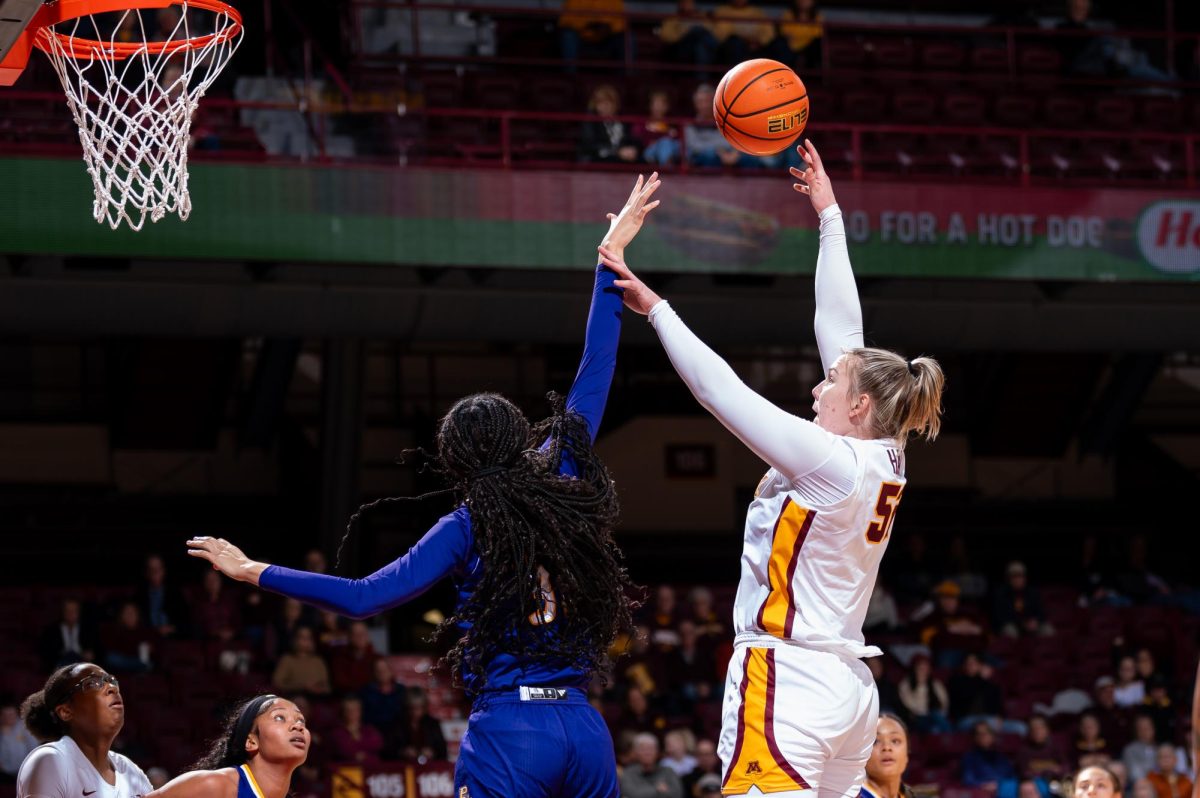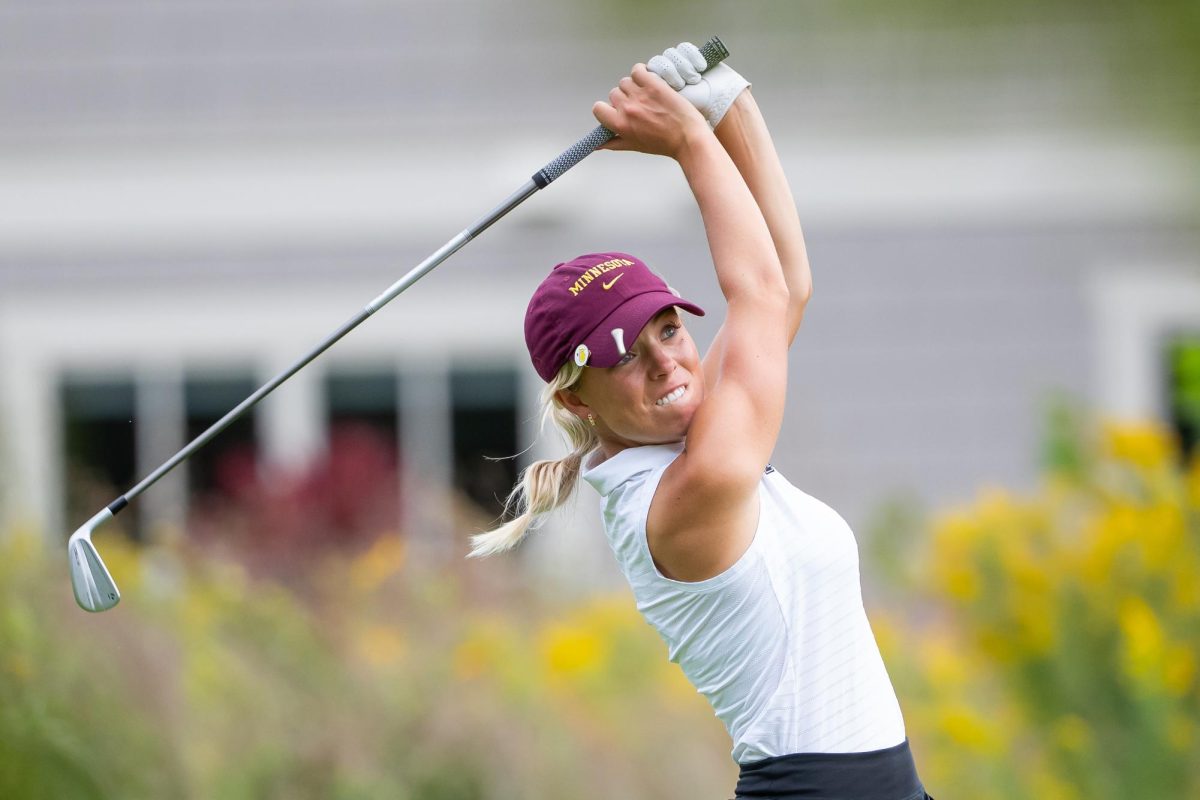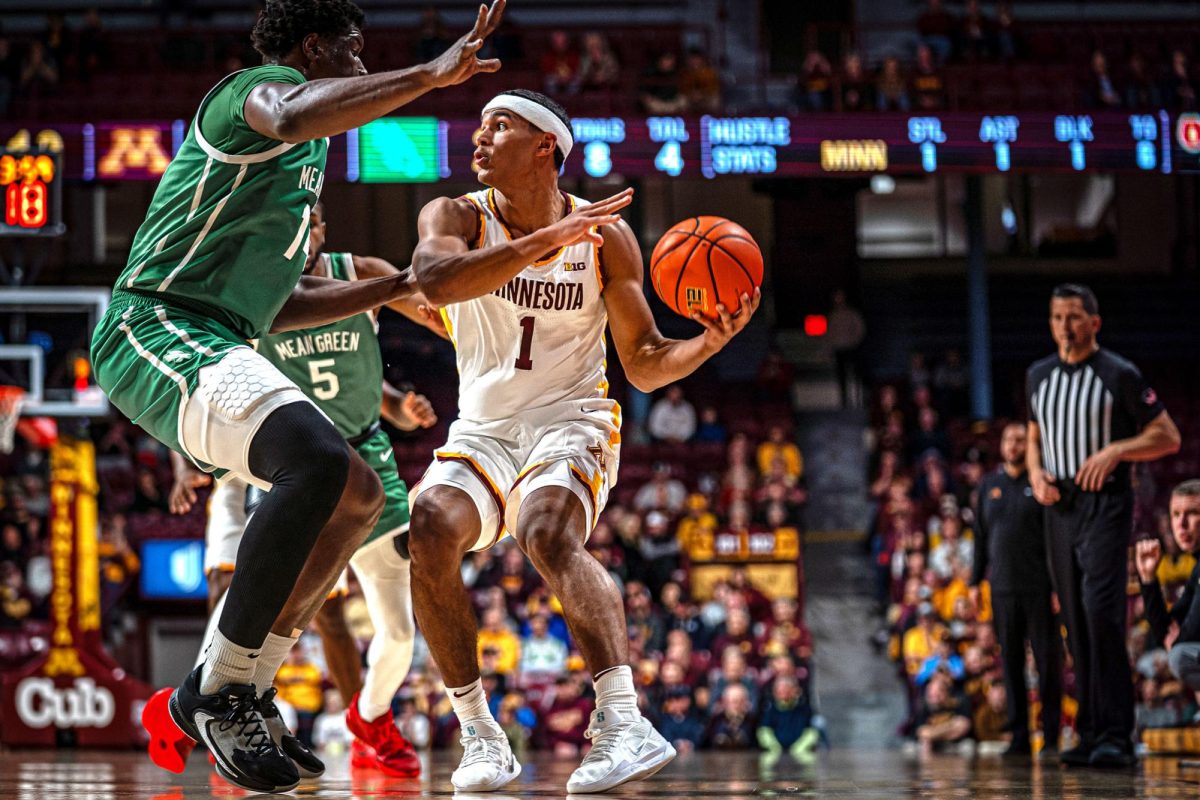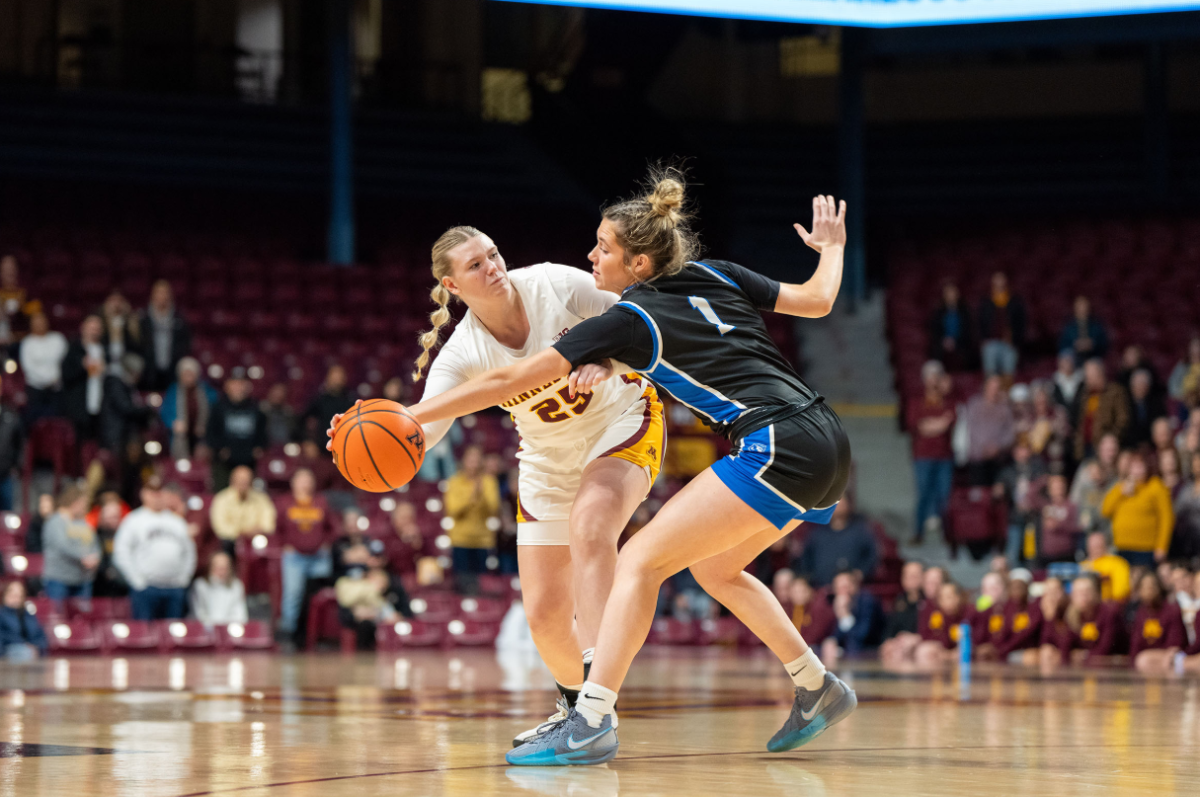Gophers head baseball coach John Anderson’s dream became a reality over the weekend.
The University of Minnesota’s baseball team began practicing Saturday on the recently reconstructed Siebert Field.
In June, the University’s Board of Regents Facilities Committee approved renovations to Siebert, which is expected to replace the Metrodome as the Gophers’ primary home field starting next season.
“It’s an amazing feeling. A longtime coming,” he said. “From day one, [the priority] was to get the field ready first so we could practice on it.”
Anderson said the team spent the first 10 minutes of practice walking around the field familiarizing themselves.
“[It’s] just like going to a road game, where you gotta learn the facility,” he said.
The field is made of synthetic turf, similar to TCF Bank Stadium.
Cement for the grandstands and dugouts has been poured, and the frame of the dark, brick-colored press box now overlooks the field.
Work surrounding the field, including the dugouts and bleachers, should be completed by the end of December, Anderson said.
Sophomore pitcher Lance Thonvold said the team is able to perform most of its regular practice routine with the exception of hitting balls off the unfinished fence.
The team still has three to four weeks of practice on the field before weather forces it indoors, Thonvold said.
Jordan Jess, another sophomore pitcher, said he has watched the progression from his home at Northstar Apartments.
“It’s amazing. You saw the old Siebert Field — we
needed this bad,” Jess said. “To have this, what it looks like now, it’s unbelievable.”
He said the team feels more at home playing close to campus instead of the Metrodome.
“It has our brand,” he said. “You’ve got the ‘M’ in the middle, you’ve got “Siebert Field” behind home plate. It’s Minnesota-based.”
Junior pitcher DJ Snelten said he is lucky to be one of the first people to use the new field, which people have talked about for nearly three decades.
“It’s going to be great being only a block away from the field as opposed to finding rides to the Metrodome,” Snelten said. “We’re going to have to do that in February and March, but it’s still great.”
Snelten said one of the immediate advantages of the field is the indent in center field.
“We’re going to be able to know how to play it off the wall as opposed to visiting teams not being used to it,” he said.
Anderson said the amenities in the dugouts will be better for the players in terms of comfort and size.
The sloped area behind left field will be a nice place from which to watch games, Thonvold said.
“It’s going to be nice for family and college students to go out there,” he said. “I think that’s the first thing that catches my eye. Once they put grass out there … you can see everything.”
Snelten said he thinks the team will have a better fan base now.
“There will be a lot of people who want to see the field ’cause it’s been in the making forever,” he said. “Now that it’s more available for students, I think we’ll see more of them out here.”
Team manager Mike Demianiuk said the difference between the old Siebert Field and the newly completed one is hard to describe, largely because they were built in two different eras.
Thonvold said he didn’t know what the field would look like originally.
“What they told us was [it’s] going to be a first-class facility, and that’s basically what we’re seeing now,” he said. “Once it gets done it’s going to look even better.”







